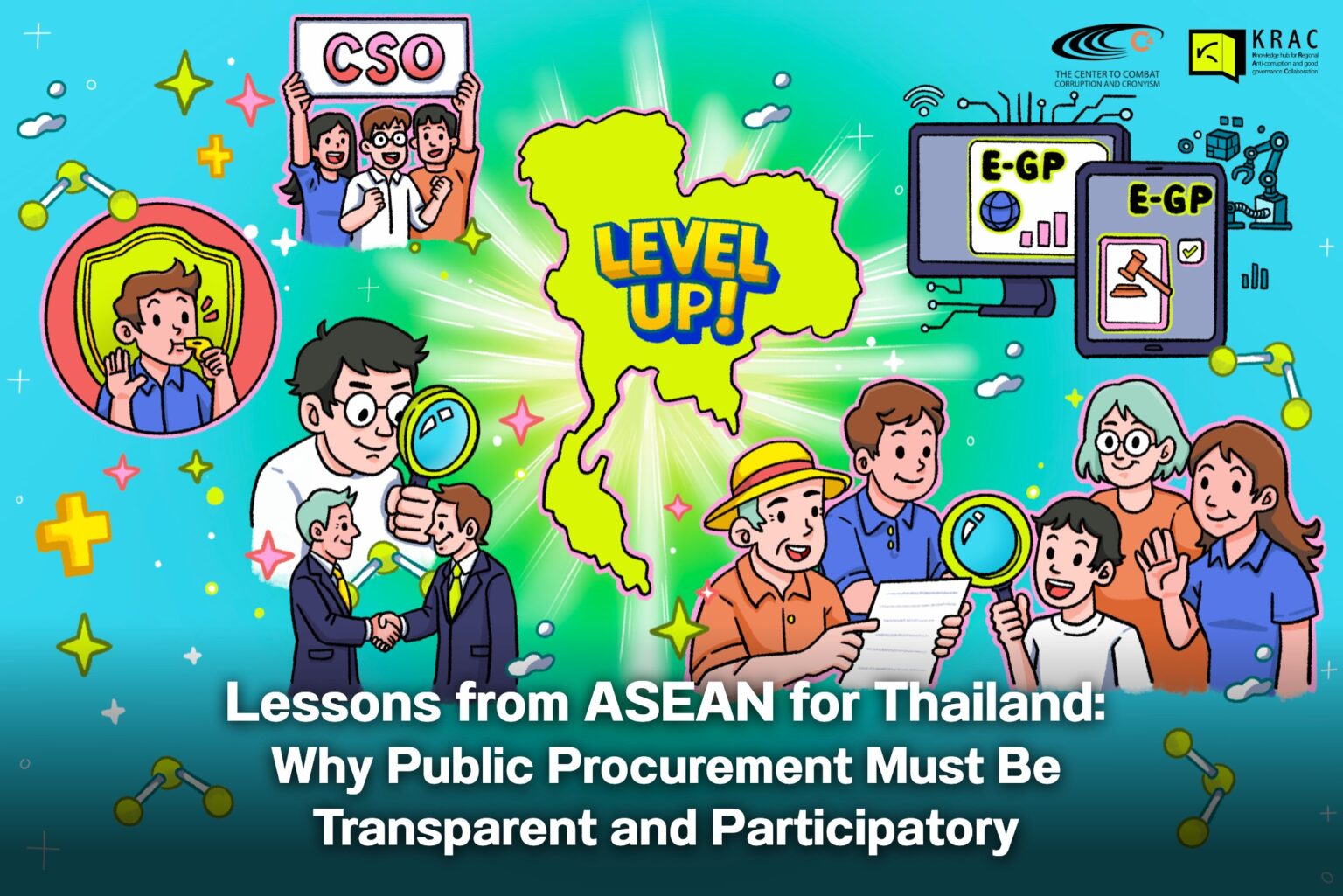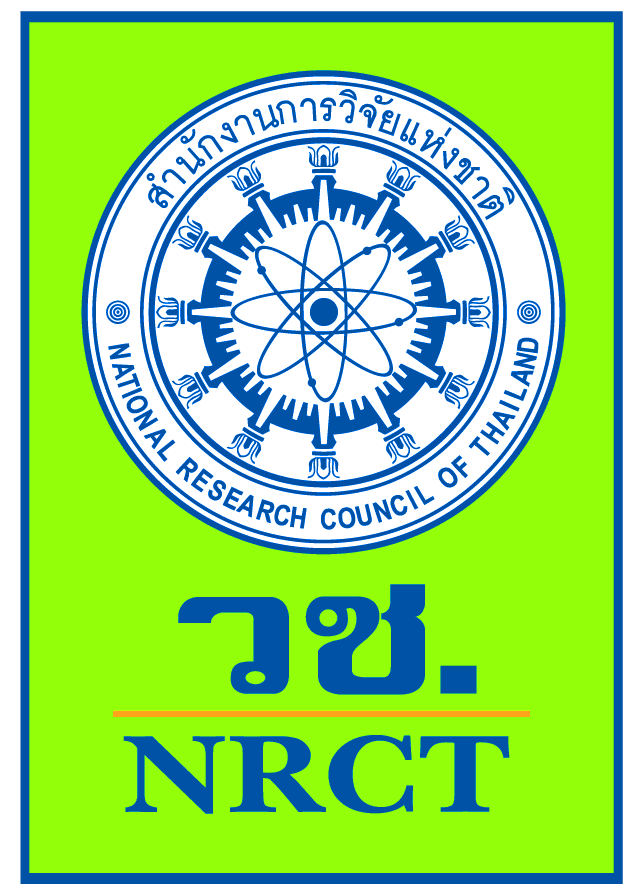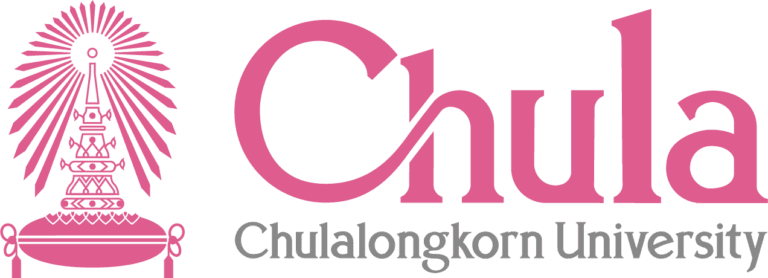
Thailand’s current public procurement system operates under the 2017 Government Procurement and Supplies Management Act, which outlines key principles such as value for money, transparency, and accountability.
However, despite these guiding principles, several practical challenges remain, including limited data disclosure, restricted public access to the procurement system, and persistent favoritism in contractor selection—factors that continue to undermine the credibility of the system.
Thailand is now undergoing a mandatory review of the Act, required every five years, to address loopholes and gaps in the public procurement process. This presents a critical opportunity for reform.
Regional Lessons for Reforming Thailand’s Procurement System
A comparative study on public procurement best practices in Southeast Asia, conducted by the Knowledge Hub for Regional Anti-Corruption and Good Governance Collaboration (KRAC) in partnership with Malaysia’s C4 Center, reveals several innovative practices that Thailand can adopt to enhance transparency, foster meaningful participation, and reduce corruption risks. Key lessons and recommendations include:
1. Strengthen Civil Society Participation Throughout the Procurement Cycle.
Thailand should enhance the role of civil society in the entire procurement process. For example, the Philippines’ Government Procurement Reform Act mandates civil society involvement in every stage—from planning to post-contract implementation. In contrast, while Thailand’s law requires public consultations, the government is not obligated to act on the feedback it receives.
2. Improve Data Access and Enhance the Electronic Procurement System
Transparency only becomes effective when the public can access and understand procurement information. Thailand’s e-GP (electronic Government Procurement) platform has faced criticism for being difficult to navigate and for publishing substandard data. Singapore and CoST (the Infrastructure Transparency Initiative) offer strong examples of how citizen-friendly platforms can improve data accessibility and usability. These systems not only meet information standards but also provide practical tools for immediate use.
3. Build Community-Based Monitoring and Accountability Mechanisms
Although Thai law allows for community involvement in large-scale procurement or investment projects, this rarely happens in practice. As a result, public oversight of budget spending is limited. Civil society in Thailand has responded by developing digital platforms to monitor corruption in public procurement (Act AI). However, these efforts lack funding. The government should support and scale up such initiatives nationwide, institutionalize community-level monitoring tools, and develop simple checklists or dashboards so the public can effectively evaluate procurement outcomes.
4. Create Robust Whistleblower Protection Mechanisms
In Thailand, whistleblowers still face insufficient legal protection, which discourages them from reporting wrongdoing. This weakens anti-corruption efforts. Therefore, stronger legal safeguards are needed, including secure and anonymous reporting channels and independent bodies to investigate complaints without political interference. Such measures would greatly enhance the effectiveness of anti-corruption efforts in public procurement.
And 5. Expand Oversight to Cover Alternative Procurement Modalities
A significant portion of corruption in Southeast Asia occurs in less regulated forms of procurement—such as emergency purchases, defense-related deals, or projects funneled through state-owned enterprises. Thailand must develop specific legal mechanisms to oversee these alternative modalities, including state enterprise borrowing and public-private partnerships, ensuring transparency and accountability even in complex or high-risk arrangements.
This study of best practices in Southeast Asia’s public procurement sector shows that while Thailand has several strengths, its system must evolve to meet growing corruption risks and public distrust. Investing in transparency and empowering citizen participation can help Thailand transform its procurement system into a regional model and reduce corruption meaningfully.
The five lessons and policy recommendations above are highly relevant for the upcoming review of the 2017 Procurement Act. They offer a valuable roadmap for making Thailand’s public procurement more transparent, accountable, and inclusive—strengthening both governance and economic competitiveness in the years ahead.
Knowledge hub for Regional Anti-corruption and good governance Collaboration (KRAC)
SEA-ACN Workshop | Strengthening Cross-Border Collaboration to Reform Government Procurement and Combat Corruption in Southeast Asia
Discover how a regional workshop led by KRAC C4 Center and SEA-ACN brought together experts from multiple countries to address gaps in public procurement reforms, share best practices, and strengthen efforts against corruption across Southeast Asia.
SEA-ACN Roundtable | Unclear Government Procurement Processes Could Pave the Way for Corruption
Lack of transparency in public procurement processes can facilitate corruption—what measures can we take to mitigate these risks? Discover regional strategies to combat corruption in government procurement from the SEA-ACN Roundtable insights.
SEA-ACN Roundtable | Transform Your Organization with the Power of Corporate Governance
Unlock the power of corporate governance to transform and strengthen your organization. Discover key insights from the SEA-ACN Roundtable, supported by KRAC, UNODC, and regional partners.



















